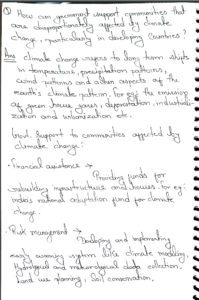The following are some of the main obstacles that the Indian biotechnology sector must overcome: - Poor research quality: research articles are written with the mindset of "publish or perish," where quantity matters more than quality. - Low funding: the majority of biotechnology research in India isRead more
The following are some of the main obstacles that the Indian biotechnology sector must overcome:
– Poor research quality: research articles are written with the mindset of “publish or perish,” where quantity matters more than quality.
– Low funding: the majority of biotechnology research in India is supported by public funds; – Low scientist earnings: in comparison to wealthy nations, scientist wages are lower
– Obtaining ethical and regulatory clearance: a time-consuming, costly procedure
– Specialised work: in the biotechnology industry, most positions are occupied by knowledgeable and experienced scientists, which leaves less space for less experienced and younger scientists.
Here are a few strategies for overcoming these obstacles :
Boost applied research financing from the corporate sector; Promote product development and innovation; and Connect academic institutions with business to provide scientists the chance to launch their own ventures.
Adopt laws enabling scientists to leave academic institutions and research centres to work in industry. Boost the biotech industry by utilising big data and artificial intelligence.



Banking regulations in India aim to make banking accessible to everyone, especially those in underserved areas. The Reserve Bank of India (RBI) has introduced various measures to promote financial inclusion. One key initiative is the Pradhan Mantri Jan Dhan Yojana, which encourages opening no-frillsRead more
Banking regulations in India aim to make banking accessible to everyone, especially those in underserved areas. The Reserve Bank of India (RBI) has introduced various measures to promote financial inclusion. One key initiative is the Pradhan Mantri Jan Dhan Yojana, which encourages opening no-frills bank accounts with minimal requirements. This helps low-income individuals access banking services without high fees or complex documentation.
See lessThe RBI also mandates that banks set up branches in rural and semi-urban areas to ensure that even remote populations have access to banking facilities. Additionally, the introduction of business correspondents (BCs) allows banks to reach out to people in far-flung areas through local representatives. Mobile banking and digital payment systems have further eased access, enabling people to manage finances through their phones. These efforts collectively help bring more people into the formal banking system, promoting economic growth and reducing inequality.